新款华硕 Zenbook S 14 是华硕紧凑型笔记本电脑的新先锋,也是首款采用英特尔全新 Lunar Lake 移动处理器的机型。这些处理器采用了新的方法,现在更加注重效率。即便如此,功耗问题也不容忽视,英特尔特别宣传其全新的 Arc-140V iGPU 在性能方面的巨大飞跃。
我们的测试设备是 Zenbook S 14 UX5406,配备了英特尔酷睿至尊 7 258V、英特尔 Arc Graphics 140V、32 GB 快速 LPDDR5x-8533 内存、1 TB SSD 以及我们熟悉的分辨率为 2,880 x 1,800 像素的 120Hz OLED 面板。该配置带触摸屏(灰色或白色),售价约为 1,499.99 美元,或者你也可以以稍低的价格购买带酷睿 Ultra 7 256V、16 GB 内存和无触摸屏(仅白色)的版本。有关新款 Lunar Lake 移动处理器的更多信息,请参阅相应的分析文章:
潜在的竞争对手比较
Rating | Version | Date | Model | Weight | Height | Size | Resolution | Price |
|---|---|---|---|---|---|---|---|---|
| 88.1 % | v8 | 09 / 2024 | Asus Zenbook S 14 UX5406 Core Ultra 7 258V, Arc 140V | 1.2 kg | 13 mm | 14.00" | 2880x1800 | |
| 84.9 % | v8 | 08 / 2024 | Asus VivoBook S 14 OLED M5406WA Ryzen AI 9 HX 370, Radeon 890M | 1.3 kg | 15.9 mm | 14.00" | 1920x1200 | |
| 89.6 % | v8 | 09 / 2024 | Honor MagicBook Art 14 Ultra 7 155H, Arc 8-Core | 1 kg | 12.9 mm | 14.60" | 3120x2080 | |
| 86.4 % | v8 | 08 / 2024 | Lenovo Yoga Slim 7X 14Q8X9 SD X Elite X1E-78-100, Adreno X1-85 3.8 TFLOPS | 1.3 kg | 15 mm | 14.50" | 2944x1840 | |
| 89 % v7 (old) | v7 (old) | 06 / 2024 | Huawei MateBook X Pro 2024 Ultra 9 185H, Arc 8-Core | 980 g | 13.5 mm | 14.20" | 3120x2080 | |
| 87.4 % v7 (old) | v7 (old) | 04 / 2024 | Samsung Galaxy Book4 Pro 14 Ultra 7 155H, Arc 8-Core | 1.2 kg | 11.6 mm | 14.00" | 2880x1800 | |
| 88.3 % v7 (old) | v7 (old) | 03 / 2024 | Lenovo Yoga Slim 7 14IMH9 Ultra 7 155H, Arc 8-Core | 1.4 kg | 14.9 mm | 14.00" | 1920x1200 | |
| 92.4 % v7 (old) | v7 (old) | 03 / 2024 | Apple MacBook Air 13 M3 10C GPU M3, M3 10-Core GPU | 1.2 kg | 11.3 mm | 13.60" | 2560x1664 |
请注意:我们最近更新了评级系统,第 8 版的结果无法与第 7 版的结果进行比较。更多信息 请点击此处.
» Notebookcheck多媒体笔记本电脑Top 10排名
» Notebookcheck游戏笔记本电脑Top 10排名
» Notebookcheck低价办公/商务笔记本电脑Top 10排名
» Notebookcheck高端办公/商务笔记本电脑Top 10排名
» Notebookcheck工作站笔记本电脑Top 10排名
» Notebookcheck亚笔记本电脑Top 10排名
» Notebookcheck超级本产品Top 10排名
» Notebookcheck变形本产品Top 10排名
» Notebookcheck平板电脑Top 10排名
» Notebookcheck智能手机Top 10排名
» Notebookcheck评测过最出色的笔记本电脑屏幕
» Notebookcheck售价500欧元以下笔记本电脑Top 10排名
» Notebookcheck售价300欧元以下笔记本电脑Top 10排名
外壳 - 铝
新款 Zenbook S 14 是一款超紧凑、超薄的 14 英寸笔记本电脑,采用了最先进的铝合金表面,我们已经从较大的 Zenbook S 16 上了解过这种材料。据说这种材料结合了铝和陶瓷的特性,特别耐刮。我们的测试设备是深色款(祖玛亚灰),但你也可以选择斯堪的纳维亚白配色的浅色款(与 Zenbook S 16 相同)。我们非常喜欢盖子上带有华硕徽标的设计,此外,它的表面似乎不会留下太多指纹印。
这款笔记本电脑的制造质量和稳定性令人印象深刻。底座仅在键盘中间区域略有倾斜,但在日常使用中应该不成问题。尝试扭转也不会对设备造成任何影响,而且盖子也非常稳定。总的来说,铰链调整得很好,单手就能打开笔记本电脑,不过在调整角度后还是会有轻微晃动。其最大开启角度为 135 度。
Zenbook S 14 的重量为 1.16 千克,仅次于华为/Honor 的两款竞争对手,后者明显更轻,约为 1 千克。不过,采用较小的 13.6 英寸显示屏的 MacBook Air 13 和所有其他对比设备都要重一些。总体而言,Zenbook S 14 是同类产品中最紧凑的机型之一,机身后部高度仅为 13 毫米,非常纤薄。极其小巧的 65 瓦插拔式电源在包含电缆的情况下重 190 克。
连接性 - 配备 Thunderbolt 和 Wi-Fi 7 的 Zenbook
笔记本电脑的两个 USB-C 端口(Thunderbolt)、一个普通 USB-A 接口和一个 HDMI 输出接口应该足以满足日常使用,不过,如果能在右侧增加一个充电接口就更实用了。它没有 SD 读卡器。
交流
| Networking | |
| Asus Zenbook S 14 UX5406 | |
| iperf3 transmit AXE11000 | |
| iperf3 receive AXE11000 | |
| Asus VivoBook S 14 OLED M5406WA | |
| iperf3 transmit AXE11000 | |
| iperf3 receive AXE11000 | |
| Honor MagicBook Art 14 | |
| iperf3 transmit AXE11000 | |
| iperf3 receive AXE11000 | |
| Lenovo Yoga Slim 7X 14Q8X9 | |
| iperf3 transmit AXE11000 | |
| iperf3 receive AXE11000 | |
| iperf3 transmit AXE11000 6GHz | |
| iperf3 receive AXE11000 6GHz | |
| Huawei MateBook X Pro 2024 | |
| iperf3 transmit AXE11000 | |
| iperf3 receive AXE11000 | |
| Samsung Galaxy Book4 Pro 14 | |
| iperf3 transmit AXE11000 | |
| iperf3 receive AXE11000 | |
| Lenovo Yoga Slim 7 14IMH9 | |
| iperf3 transmit AXE11000 | |
| iperf3 receive AXE11000 | |
| iperf3 transmit AXE11000 6GHz | |
| iperf3 receive AXE11000 6GHz | |
| Apple MacBook Air 13 M3 10C GPU | |
| iperf3 transmit AXE11000 | |
| iperf3 receive AXE11000 | |
网络摄像头
华硕安装了一个 1080p 网络摄像头,包括一个红外模块,可通过 Windows Hello 进行面部识别。网络摄像头直接支持最新的 Studio Effects,作为笔记本操作系统的一部分,在光线条件良好的情况下,它能拍出不错的照片。

维护
可持续性
Zenbook S 14 的包装主要由可回收材料组成。不过,制造商没有提供任何有关生产过程中二氧化碳排放量的信息。没有服务指南,笔记本电脑必须送修。
输入设备 - 1.1 毫米行程的键盘
触摸板的尺寸为 12.7 x 7.9 厘米,大小适中,手感舒适顺滑。在测试过程中,我们在操作它时从未遇到过任何问题,而且附加的边缘手势(滚动改变亮度、音量等)也能正常工作,不过,带有触觉触摸板的设备(如华为、Honor )在执行这一功能时会做得更好。触摸板的底部区域可以通过机械方式点击,但会产生较大的噪音。
显示屏 - 120 Hz Lumina OLED
Zenbook S 14 配备了我们熟悉的三星 14 英寸 OLED 面板。它的分辨率为 2,880 x 1,800 像素,宽高比为 16:10,主观而言,这块闪亮面板的画质令人印象深刻。所有内容看起来都非常清晰,色彩鲜艳,黑值超低。得益于 120 Hz 的刷新率,动作看起来非常流畅,同时响应时间快如闪电。OLED 面板不会出现背光出血现象,但在所有亮度级别下都会以 480 Hz 的频率使用 PWM 闪烁。值得庆幸的是,闪烁幅度很小,而且华硕还通过 MyAsus 软件提供了无闪烁 OLED 调光功能。亮度和色温可根据环境照明条件自动调节。顺便说一下,我们的测试配置没有触摸屏。
该面板在 SDR 工作模式下的最大亮度约为 380 cd/m²,我们注意到在 HDR 模式下的最大亮度为 615 cd/m²。这是目前三星面板的典型值,但竞争对手已经提供了更高的亮度。例如,Matebook X Pro 在 SDR 模式下的亮度超过 600 cd/m²(HDR:>900 cd/m²),Lenovo Yoga Slim 7x 以及Honor MagicBook Art 在 SDR 模式下的亮度约为 100 cd/m²。
| |||||||||||||||||||||||||
Brightness Distribution: 98 %
Center on Battery: 374 cd/m²
Contrast: ∞:1 (Black: 0 cd/m²)
ΔE Color 1 | 0.5-29.43 Ø4.83
ΔE Greyscale 1.1 | 0.09-98 Ø5.1
89.2% AdobeRGB 1998 (Argyll 2.2.0 3D)
100% sRGB (Argyll 2.2.0 3D)
99% Display P3 (Argyll 2.2.0 3D)
Gamma: 2.15
| Asus Zenbook S 14 UX5406 ATNA40CU09-0, OLED, 2880x1800, 14", 120 Hz | Asus VivoBook S 14 OLED M5406WA ATNA40CT02-0 (SDC41A0), OLED, 1920x1200, 14", 60 Hz | Honor MagicBook Art 14 EDO14.44, OLED, 3120x2080, 14.6", 120 Hz | Lenovo Yoga Slim 7X 14Q8X9 LEN145WQ+, OLED, 2944x1840, 14.5", 90 Hz | Huawei MateBook X Pro 2024 VisN236HUZ15, OLED, 3120x2080, 14.2", 120 Hz | Samsung Galaxy Book4 Pro 14 ATNA40CU07-0, OLED, 2880x1800, 14", 120 Hz | Lenovo Yoga Slim 7 14IMH9 LEN140WUXGA, OLED, 1920x1200, 14", 60 Hz | Apple MacBook Air 13 M3 10C GPU IPS, 2560x1664, 13.6", 60 Hz | |
|---|---|---|---|---|---|---|---|---|
| Display | 3% | -2% | 0% | 2% | -2% | 3% | -1% | |
| Display P3 Coverage | 99 | 99.9 1% | 95.9 -3% | 97.3 -2% | 99.8 1% | 97 -2% | 99.8 1% | 98.4 -1% |
| sRGB Coverage | 100 | 100 0% | 99.9 0% | 100 0% | 100 0% | 100 0% | 100 0% | 99.9 0% |
| AdobeRGB 1998 Coverage | 89.2 | 97.2 9% | 86.5 -3% | 90.8 2% | 94.6 6% | 85.2 -4% | 97.3 9% | 87.9 -1% |
| Response Times | -78% | 34% | 10% | 12% | -8% | -189% | -4280% | |
| Response Time Grey 50% / Grey 80% * | 0.7 ? | 1.3 ? -86% | 0.58 ? 17% | 0.39 ? 44% | 0.75 ? -7% | 0.83 ? -19% | 1.78 ? -154% | 34.5 ? -4829% |
| Response Time Black / White * | 0.71 ? | 1.2 ? -69% | 0.52 ? 27% | 0.71 ? -0% | 0.49 ? 31% | 0.69 ? 3% | 2.3 ? -224% | 27.2 ? -3731% |
| PWM Frequency | 480 ? | 240 ? | 120 | 360 ? | 1440 | 240 ? | 489.7 ? | |
| PWM Amplitude * | 26 | 11 58% | 30 -15% | |||||
| Screen | -23% | -3% | -26% | -16% | -29% | -100% | -14% | |
| Brightness middle | 374 | 385 3% | 477 28% | 472 26% | 613 64% | 392 5% | 388.3 4% | 525 40% |
| Brightness | 379 | 382 1% | 480 27% | 475 25% | 624 65% | 398 5% | 388 2% | 506 34% |
| Brightness Distribution | 98 | 95 -3% | 92 -6% | 97 -1% | 93 -5% | 97 -1% | 97 -1% | 92 -6% |
| Black Level * | 0.03 | 0.42 | ||||||
| Colorchecker dE 2000 * | 1 | 1.99 -99% | 1 -0% | 1.4 -40% | 1.9 -90% | 1.3 -30% | 4.4 -340% | 1.4 -40% |
| Colorchecker dE 2000 max. * | 2.2 | 3.69 -68% | 2 9% | 4.1 -86% | 3.1 -41% | 3.2 -45% | 7.37 -235% | 2.8 -27% |
| Greyscale dE 2000 * | 1.1 | 0.8 27% | 1.9 -73% | 2 -82% | 2.1 -91% | 2.3 -109% | 1.4 -27% | 2 -82% |
| Gamma | 2.15 102% | 2.204 100% | 2.19 100% | 2.21 100% | 2.2 100% | 2.24 98% | 2.24 98% | 2.2 100% |
| CCT | 6549 99% | 6474 100% | 6178 105% | 6493 100% | 6447 101% | 6517 100% | 6339 103% | 6876 95% |
| Contrast | 12833 | 1250 | ||||||
| Colorchecker dE 2000 calibrated * | 1.79 | 0.8 | 1.5 | 0.64 | ||||
| Total Average (Program / Settings) | -33% /
-26% | 10% /
7% | -5% /
-11% | -1% /
-6% | -13% /
-18% | -95% /
-88% | -1432% /
-786% |
* ... smaller is better
像往常一样,MyAsus 应用程序中提供了各种色彩配置文件,我们使用专业的 CalMAN 软件对其进行了分析。预设的 "原生 "配置文件已经提供了准确的灰度,但色彩过于饱和。显示 P3 配置文件提供了最准确的色彩,所有偏差都低于 3 的重要限制。此外,还提供了精确的 sRGB 模式,因此在编辑图像/视频时没有任何限制。
Display Response Times
| ↔ Response Time Black to White | ||
|---|---|---|
| 0.71 ms ... rise ↗ and fall ↘ combined | ↗ 0.4 ms rise | |
| ↘ 0.31 ms fall | ||
| The screen shows very fast response rates in our tests and should be very well suited for fast-paced gaming. In comparison, all tested devices range from 0.1 (minimum) to 240 (maximum) ms. » 1 % of all devices are better. This means that the measured response time is better than the average of all tested devices (20.5 ms). | ||
| ↔ Response Time 50% Grey to 80% Grey | ||
| 0.7 ms ... rise ↗ and fall ↘ combined | ↗ 0.38 ms rise | |
| ↘ 0.32 ms fall | ||
| The screen shows very fast response rates in our tests and should be very well suited for fast-paced gaming. In comparison, all tested devices range from 0.165 (minimum) to 636 (maximum) ms. » 1 % of all devices are better. This means that the measured response time is better than the average of all tested devices (32.1 ms). | ||
Screen Flickering / PWM (Pulse-Width Modulation)
| Screen flickering / PWM detected | 480 Hz Amplitude: 26 % | ≤ 100 % brightness setting | |
The display backlight flickers at 480 Hz (worst case, e.g., utilizing PWM) Flickering detected at a brightness setting of 100 % and below. There should be no flickering or PWM above this brightness setting. The frequency of 480 Hz is relatively high, so most users sensitive to PWM should not notice any flickering. However, there are reports that some users are still sensitive to PWM at 500 Hz and above, so be aware. In comparison: 53 % of all tested devices do not use PWM to dim the display. If PWM was detected, an average of 8356 (minimum: 5 - maximum: 343500) Hz was measured. | |||
性能 - 月亮湖和 32GB 内存
如上文所述,新款 Zenbook S 14 可配备酷睿至尊 7 256V 或酷睿至尊 7 258V,以及 Arc Graphics 140V。新的 Lunar Lake CPU 最多可搭配 32 GB 内存(LPDDR5x-8533),我们的测试设备就是这种情况。
测试条件
MyAsus 应用程序中提供了四种不同的风扇配置文件,也可以通过 Fn+F 组合键方便地进行切换:耳语、标准、性能 和 全速。我们在下面的基准测试和测量中使用了标准模式,因为它是性能和风扇音量之间的最佳折衷。对于大多数用户来说,"耳语 "模式也足够日常使用。不过,两个更强大的配置文件仍然值得使用,尤其是在游戏时。稍后再详述。
| 风扇外形 | CPU TDP | CB 2024 Multi | Time Spy Graphics | 最大风扇噪音排放 |
|---|---|---|---|---|
| Whisper | 28/12 瓦 | 406 点 | 2,955 点 | 27.6 dB(A) |
| 标准 | 37/17 瓦 | 497 点 | 3,669 点 | 33.6 dB(A) |
| 性能 | 37/24 瓦 | 567 分 | 4,047 分 | 42.3 分贝(A) |
| 全速 | 37/28 瓦 | 602 分 | 4,118 分 | 44.7 分贝(A) |
处理器 - Intel Core Ultra 7 258V
Zenbook S 14 采用了新一代英特尔酷睿至强 7 258V,我们在分析文章中对其进行了详细介绍。总的来说,与之前的流星湖芯片相比,它有了一些根本性的变化,因为它不再像流星湖芯片那样有 16 个核心 酷睿至尊 7 155H(6 个 P 核心、10 个 E 核心),该型号只配备了 4 个性能核心和 4 个效率核心,没有超线程功能。在我们的测试设备中,它的最大功耗为 37 瓦,因此它不再像以前的芯片那样有高得离谱的功耗限制。
当然,减少内核会影响其多核性能,在这方面,新的 Lunar Lake 芯片并没有给人留下深刻印象。旧版流星湖芯片的速度更快,AMD 的 Zen 5 CPU 和高通的 Snapdragon 芯片也是如此。即便如此,它的单核性能还是有所提升,在这种情况下,酷睿至尊 7 258V 能够从大多数竞争对手中脱颖而出。在这种情况下,骁龙 X Elite 芯片与之不相上下,而 Meteor Lake 和 StrixPoint 则略逊一筹。Apple被动冷却的 M3 SoC 在这两种情况下都更快。
| Cinebench 2024 / CPU Multi Core | |
| Lenovo Yoga Slim 7X 14Q8X9 | |
| Asus Zenbook S 16 UM5606-RK333W | |
| Huawei MateBook X Pro 2024 | |
| Asus VivoBook S 15 Snapdragon 8-Core | |
| Asus Zenbook S 14 UX5406 (Full-Speed Mode) | |
| Apple MacBook Air 13 M3 8C GPU | |
| Apple MacBook Air 13 M3 10C GPU | |
| Asus Zenbook S 14 UX5406 (Performance Mode) | |
| Asus ProArt PZ13 HT5306 | |
| Honor MagicBook Art 14 | |
| Asus Zenbook S 14 UX5406 (Standard Mode) | |
| Asus Zenbook S 14 UX5406 (Whisper Mode) | |
| Cinebench 2024 / CPU Single Core | |
| Apple MacBook Air 13 M3 10C GPU | |
| Apple MacBook Air 13 M3 8C GPU | |
| Asus Zenbook S 14 UX5406 | |
| Asus Zenbook S 16 UM5606-RK333W | |
| Asus VivoBook S 15 Snapdragon 8-Core | |
| Huawei MateBook X Pro 2024 | |
| Asus ProArt PZ13 HT5306 | |
| Lenovo Yoga Slim 7X 14Q8X9 | |
| Honor MagicBook Art 14 | |
| Geekbench 6.4 / Multi-Core | |
| Asus VivoBook S 14 OLED M5406WA (6.2.1) | |
| Lenovo Yoga Slim 7X 14Q8X9 | |
| Huawei MateBook X Pro 2024 (6.2.1) | |
| Asus Zenbook S 16 UM5606-RK333W (6.2.1) | |
| Asus ZenBook 14 UX3405MA (6.2.1) | |
| Apple MacBook Air 13 M3 10C GPU | |
| Apple MacBook Air 13 M3 8C GPU | |
| Lenovo Yoga Slim 7 14IMH9 (6.2.1) | |
| Samsung Galaxy Book4 Pro 14 (6.2.1) | |
| Honor MagicBook Art 14 (6.2.1) | |
| Asus VivoBook S 15 Snapdragon 8-Core | |
| Asus ProArt PZ13 HT5306 | |
| Asus Zenbook S 14 UX5406 (6.2.1) | |
| Geekbench 6.4 / Single-Core | |
| Apple MacBook Air 13 M3 8C GPU | |
| Apple MacBook Air 13 M3 10C GPU | |
| Asus VivoBook S 14 OLED M5406WA (6.2.1) | |
| Asus Zenbook S 16 UM5606-RK333W (6.2.1) | |
| Asus Zenbook S 14 UX5406 (6.2.1) | |
| Huawei MateBook X Pro 2024 (6.2.1) | |
| Lenovo Yoga Slim 7X 14Q8X9 | |
| Asus ZenBook 14 UX3405MA (6.2.1) | |
| Asus VivoBook S 15 Snapdragon 8-Core | |
| Lenovo Yoga Slim 7 14IMH9 (6.2.1) | |
| Asus ProArt PZ13 HT5306 | |
| Honor MagicBook Art 14 (6.2.1) | |
| Samsung Galaxy Book4 Pro 14 (6.2.1) | |
现在,你可能会问,你到底需要多少功率?对于大多数用户来说,所有现代芯片理论上都足够快。此外,在日常使用中,你还可以从其良好的单核性能中获益。然而,对它的效率分析证明是有问题的,因为令人惊讶的是,新的 Lunar Lake 处理器在这种情况下表现并不特别好,落后于Apple M3 以及所有骁龙芯片和 AMD 的 Zen 5。更多不同功率限制下的能效测量和性能比较请参见 我们的分析文章中。
| Power Consumption / Cinebench 2024 Multi Power Efficiency - external Monitor | |
| Apple MacBook Air 13 M3 8C GPU | |
| Samsung Galaxy Book4 Edge 16 X1E-84-100 | |
| Asus ProArt P16 H7606WI | |
| Asus Zenbook S 16 UM5606-RK333W | |
| Asus ProArt P16 H7606WI | |
| Asus Zenbook S 14 UX5406 | |
| Asus VivoBook S 15 Snapdragon 8-Core | |
| Lenovo Yoga Slim 7X 14Q8X9 | |
| Asus Zenbook S 14 UX5406 | |
| Apple MacBook Pro 14 2023 M2 Pro | |
| Asus Zenbook S 14 UX5406 | |
| Honor MagicBook Art 14 | |
| Asus Zenbook S 14 UX5406 | |
| Power Consumption / Cinebench 2024 Single Power Efficiency - external Monitor | |
| Apple MacBook Air 13 M3 8C GPU | |
| Apple MacBook Pro 14 2023 M2 Pro | |
| Asus VivoBook S 15 Snapdragon 8-Core | |
| Lenovo Yoga Slim 7X 14Q8X9 | |
| Samsung Galaxy Book4 Edge 16 X1E-84-100 | |
| Asus Zenbook S 14 UX5406 | |
| Asus Zenbook S 16 UM5606-RK333W | |
| Honor MagicBook Art 14 | |
Cinebench R15 Multi continuous test
它的 CPU 性能并没有保持稳定,因为它只在短时间内保持了 37 瓦的功耗,很快就降到了 17 瓦。在持续负载下,其多核性能下降了约 30%,而在电池模式下性能保持稳定。更多 CPU 基准测试可在 技术部分.
Cinebench R23: Multi Core | Single Core
Cinebench R20: CPU (Multi Core) | CPU (Single Core)
Cinebench R15: CPU Multi 64Bit | CPU Single 64Bit
Blender: v2.79 BMW27 CPU
7-Zip 18.03: 7z b 4 | 7z b 4 -mmt1
HWBOT x265 Benchmark v2.2: 4k Preset
LibreOffice : 20 Documents To PDF
R Benchmark 2.5: Overall mean
| CPU Performance Rating | |
| Asus VivoBook S 14 OLED M5406WA | |
| Huawei MateBook X Pro 2024 | |
| Lenovo Yoga Slim 7 14IMH9 | |
| Samsung Galaxy Book4 Pro 14 | |
| Average Intel Core Ultra 7 258V | |
| Average of class Subnotebook | |
| Honor MagicBook Art 14 | |
| Asus Zenbook S 14 UX5406 | |
| Apple MacBook Air 13 M3 10C GPU -9! | |
| Lenovo Yoga Slim 7X 14Q8X9 | |
| Cinebench R23 / Multi Core | |
| Asus VivoBook S 14 OLED M5406WA | |
| Huawei MateBook X Pro 2024 | |
| Lenovo Yoga Slim 7 14IMH9 | |
| Average of class Subnotebook (1555 - 21812, n=75, last 2 years) | |
| Samsung Galaxy Book4 Pro 14 | |
| Honor MagicBook Art 14 | |
| Average Intel Core Ultra 7 258V (8091 - 11097, n=17) | |
| Apple MacBook Air 13 M3 10C GPU | |
| Asus Zenbook S 14 UX5406 | |
| Lenovo Yoga Slim 7X 14Q8X9 | |
| Cinebench R23 / Single Core | |
| Asus VivoBook S 14 OLED M5406WA | |
| Apple MacBook Air 13 M3 10C GPU | |
| Asus Zenbook S 14 UX5406 | |
| Average Intel Core Ultra 7 258V (1664 - 1947, n=17) | |
| Huawei MateBook X Pro 2024 | |
| Lenovo Yoga Slim 7 14IMH9 | |
| Average of class Subnotebook (358 - 2165, n=75, last 2 years) | |
| Honor MagicBook Art 14 | |
| Samsung Galaxy Book4 Pro 14 | |
| Lenovo Yoga Slim 7X 14Q8X9 | |
| Cinebench R20 / CPU (Multi Core) | |
| Asus VivoBook S 14 OLED M5406WA | |
| Huawei MateBook X Pro 2024 | |
| Lenovo Yoga Slim 7 14IMH9 | |
| Average of class Subnotebook (579 - 8541, n=70, last 2 years) | |
| Samsung Galaxy Book4 Pro 14 | |
| Honor MagicBook Art 14 | |
| Average Intel Core Ultra 7 258V (3158 - 4314, n=17) | |
| Asus Zenbook S 14 UX5406 | |
| Lenovo Yoga Slim 7X 14Q8X9 | |
| Cinebench R20 / CPU (Single Core) | |
| Asus VivoBook S 14 OLED M5406WA | |
| Average Intel Core Ultra 7 258V (643 - 749, n=17) | |
| Huawei MateBook X Pro 2024 | |
| Lenovo Yoga Slim 7 14IMH9 | |
| Honor MagicBook Art 14 | |
| Average of class Subnotebook (128 - 826, n=70, last 2 years) | |
| Asus Zenbook S 14 UX5406 | |
| Samsung Galaxy Book4 Pro 14 | |
| Lenovo Yoga Slim 7X 14Q8X9 | |
| Cinebench R15 / CPU Multi 64Bit | |
| Asus VivoBook S 14 OLED M5406WA | |
| Huawei MateBook X Pro 2024 | |
| Lenovo Yoga Slim 7 14IMH9 | |
| Samsung Galaxy Book4 Pro 14 | |
| Honor MagicBook Art 14 | |
| Lenovo Yoga Slim 7X 14Q8X9 | |
| Average of class Subnotebook (327 - 3345, n=75, last 2 years) | |
| Average Intel Core Ultra 7 258V (1399 - 1656, n=17) | |
| Asus Zenbook S 14 UX5406 | |
| Cinebench R15 / CPU Single 64Bit | |
| Asus VivoBook S 14 OLED M5406WA | |
| Average Intel Core Ultra 7 258V (258 - 298, n=17) | |
| Huawei MateBook X Pro 2024 | |
| Asus Zenbook S 14 UX5406 | |
| Average of class Subnotebook (72.4 - 322, n=71, last 2 years) | |
| Lenovo Yoga Slim 7 14IMH9 | |
| Honor MagicBook Art 14 | |
| Samsung Galaxy Book4 Pro 14 | |
| Lenovo Yoga Slim 7X 14Q8X9 | |
| Blender / v2.79 BMW27 CPU | |
| Apple MacBook Air 13 M3 10C GPU | |
| Asus Zenbook S 14 UX5406 | |
| Honor MagicBook Art 14 | |
| Average of class Subnotebook (159 - 2271, n=72, last 2 years) | |
| Average Intel Core Ultra 7 258V (315 - 452, n=17) | |
| Lenovo Yoga Slim 7X 14Q8X9 | |
| Samsung Galaxy Book4 Pro 14 | |
| Huawei MateBook X Pro 2024 | |
| Lenovo Yoga Slim 7 14IMH9 | |
| Asus VivoBook S 14 OLED M5406WA | |
| 7-Zip 18.03 / 7z b 4 | |
| Asus VivoBook S 14 OLED M5406WA | |
| Lenovo Yoga Slim 7 14IMH9 | |
| Huawei MateBook X Pro 2024 | |
| Lenovo Yoga Slim 7X 14Q8X9 | |
| Samsung Galaxy Book4 Pro 14 | |
| Average of class Subnotebook (11668 - 77867, n=67, last 2 years) | |
| Honor MagicBook Art 14 | |
| Average Intel Core Ultra 7 258V (28700 - 36724, n=17) | |
| Asus Zenbook S 14 UX5406 | |
| 7-Zip 18.03 / 7z b 4 -mmt1 | |
| Asus VivoBook S 14 OLED M5406WA | |
| Average Intel Core Ultra 7 258V (5265 - 5869, n=17) | |
| Huawei MateBook X Pro 2024 | |
| Asus Zenbook S 14 UX5406 | |
| Average of class Subnotebook (2643 - 6442, n=69, last 2 years) | |
| Honor MagicBook Art 14 | |
| Lenovo Yoga Slim 7 14IMH9 | |
| Samsung Galaxy Book4 Pro 14 | |
| Lenovo Yoga Slim 7X 14Q8X9 | |
| HWBOT x265 Benchmark v2.2 / 4k Preset | |
| Asus VivoBook S 14 OLED M5406WA | |
| Lenovo Yoga Slim 7 14IMH9 | |
| Huawei MateBook X Pro 2024 | |
| Average of class Subnotebook (0.97 - 25.1, n=70, last 2 years) | |
| Average Intel Core Ultra 7 258V (9.65 - 14.2, n=17) | |
| Samsung Galaxy Book4 Pro 14 | |
| Asus Zenbook S 14 UX5406 | |
| Honor MagicBook Art 14 | |
| Lenovo Yoga Slim 7X 14Q8X9 | |
| LibreOffice / 20 Documents To PDF | |
| Asus Zenbook S 14 UX5406 | |
| Lenovo Yoga Slim 7X 14Q8X9 | |
| Average of class Subnotebook (38.5 - 220, n=68, last 2 years) | |
| Asus VivoBook S 14 OLED M5406WA | |
| Average Intel Core Ultra 7 258V (41.1 - 59.3, n=17) | |
| Lenovo Yoga Slim 7 14IMH9 | |
| Samsung Galaxy Book4 Pro 14 | |
| Honor MagicBook Art 14 | |
| Huawei MateBook X Pro 2024 | |
| R Benchmark 2.5 / Overall mean | |
| Lenovo Yoga Slim 7X 14Q8X9 | |
| Average of class Subnotebook (0.403 - 1.456, n=70, last 2 years) | |
| Samsung Galaxy Book4 Pro 14 | |
| Honor MagicBook Art 14 | |
| Lenovo Yoga Slim 7 14IMH9 | |
| Asus Zenbook S 14 UX5406 | |
| Average Intel Core Ultra 7 258V (0.4457 - 0.4852, n=17) | |
| Huawei MateBook X Pro 2024 | |
| Asus VivoBook S 14 OLED M5406WA | |
* ... smaller is better
AIDA64: FP32 Ray-Trace | FPU Julia | CPU SHA3 | CPU Queen | FPU SinJulia | FPU Mandel | CPU AES | CPU ZLib | FP64 Ray-Trace | CPU PhotoWorxx
| Performance Rating | |
| Asus VivoBook S 14 OLED M5406WA | |
| Huawei MateBook X Pro 2024 | |
| Lenovo Yoga Slim 7 14IMH9 | |
| Average of class Subnotebook | |
| Honor MagicBook Art 14 | |
| Average Intel Core Ultra 7 258V | |
| Samsung Galaxy Book4 Pro 14 | |
| Lenovo Yoga Slim 7X 14Q8X9 | |
| Asus Zenbook S 14 UX5406 | |
| AIDA64 / FP32 Ray-Trace | |
| Asus VivoBook S 14 OLED M5406WA | |
| Lenovo Yoga Slim 7 14IMH9 | |
| Average of class Subnotebook (1135 - 32888, n=70, last 2 years) | |
| Huawei MateBook X Pro 2024 | |
| Average Intel Core Ultra 7 258V (8454 - 12781, n=17) | |
| Asus Zenbook S 14 UX5406 | |
| Samsung Galaxy Book4 Pro 14 | |
| Honor MagicBook Art 14 | |
| Lenovo Yoga Slim 7X 14Q8X9 | |
| AIDA64 / FPU Julia | |
| Asus VivoBook S 14 OLED M5406WA | |
| Lenovo Yoga Slim 7 14IMH9 | |
| Huawei MateBook X Pro 2024 | |
| Average of class Subnotebook (5218 - 123315, n=70, last 2 years) | |
| Average Intel Core Ultra 7 258V (40875 - 63401, n=17) | |
| Asus Zenbook S 14 UX5406 | |
| Samsung Galaxy Book4 Pro 14 | |
| Honor MagicBook Art 14 | |
| Lenovo Yoga Slim 7X 14Q8X9 | |
| AIDA64 / CPU SHA3 | |
| Asus VivoBook S 14 OLED M5406WA | |
| Lenovo Yoga Slim 7X 14Q8X9 | |
| Lenovo Yoga Slim 7 14IMH9 | |
| Huawei MateBook X Pro 2024 | |
| Average of class Subnotebook (444 - 5287, n=70, last 2 years) | |
| Average Intel Core Ultra 7 258V (1930 - 2817, n=17) | |
| Asus Zenbook S 14 UX5406 | |
| Honor MagicBook Art 14 | |
| Samsung Galaxy Book4 Pro 14 | |
| AIDA64 / CPU Queen | |
| Asus VivoBook S 14 OLED M5406WA | |
| Huawei MateBook X Pro 2024 | |
| Samsung Galaxy Book4 Pro 14 | |
| Honor MagicBook Art 14 | |
| Lenovo Yoga Slim 7 14IMH9 | |
| Average of class Subnotebook (10579 - 115682, n=70, last 2 years) | |
| Lenovo Yoga Slim 7X 14Q8X9 | |
| Asus Zenbook S 14 UX5406 | |
| Average Intel Core Ultra 7 258V (49510 - 49818, n=17) | |
| AIDA64 / FPU SinJulia | |
| Asus VivoBook S 14 OLED M5406WA | |
| Lenovo Yoga Slim 7 14IMH9 | |
| Huawei MateBook X Pro 2024 | |
| Average of class Subnotebook (744 - 18418, n=70, last 2 years) | |
| Samsung Galaxy Book4 Pro 14 | |
| Honor MagicBook Art 14 | |
| Average Intel Core Ultra 7 258V (3817 - 4440, n=17) | |
| Asus Zenbook S 14 UX5406 | |
| Lenovo Yoga Slim 7X 14Q8X9 | |
| AIDA64 / FPU Mandel | |
| Asus VivoBook S 14 OLED M5406WA | |
| Lenovo Yoga Slim 7 14IMH9 | |
| Average of class Subnotebook (3341 - 65433, n=70, last 2 years) | |
| Huawei MateBook X Pro 2024 | |
| Average Intel Core Ultra 7 258V (21670 - 33565, n=17) | |
| Asus Zenbook S 14 UX5406 | |
| Samsung Galaxy Book4 Pro 14 | |
| Honor MagicBook Art 14 | |
| Lenovo Yoga Slim 7X 14Q8X9 | |
| AIDA64 / CPU AES | |
| Huawei MateBook X Pro 2024 | |
| Honor MagicBook Art 14 | |
| Asus VivoBook S 14 OLED M5406WA | |
| Lenovo Yoga Slim 7 14IMH9 | |
| Lenovo Yoga Slim 7X 14Q8X9 | |
| Average of class Subnotebook (638 - 161430, n=70, last 2 years) | |
| Samsung Galaxy Book4 Pro 14 | |
| Average Intel Core Ultra 7 258V (30957 - 40753, n=17) | |
| Asus Zenbook S 14 UX5406 | |
| AIDA64 / CPU ZLib | |
| Asus VivoBook S 14 OLED M5406WA | |
| Lenovo Yoga Slim 7 14IMH9 | |
| Huawei MateBook X Pro 2024 | |
| Lenovo Yoga Slim 7X 14Q8X9 | |
| Average of class Subnotebook (164.9 - 1379, n=70, last 2 years) | |
| Average Intel Core Ultra 7 258V (422 - 632, n=17) | |
| Honor MagicBook Art 14 | |
| Samsung Galaxy Book4 Pro 14 | |
| Asus Zenbook S 14 UX5406 | |
| AIDA64 / FP64 Ray-Trace | |
| Asus VivoBook S 14 OLED M5406WA | |
| Average of class Subnotebook (610 - 17495, n=70, last 2 years) | |
| Lenovo Yoga Slim 7 14IMH9 | |
| Huawei MateBook X Pro 2024 | |
| Average Intel Core Ultra 7 258V (4258 - 6930, n=17) | |
| Asus Zenbook S 14 UX5406 | |
| Samsung Galaxy Book4 Pro 14 | |
| Lenovo Yoga Slim 7X 14Q8X9 | |
| Honor MagicBook Art 14 | |
| AIDA64 / CPU PhotoWorxx | |
| Lenovo Yoga Slim 7 14IMH9 | |
| Average Intel Core Ultra 7 258V (44223 - 54971, n=17) | |
| Asus Zenbook S 14 UX5406 | |
| Asus VivoBook S 14 OLED M5406WA | |
| Honor MagicBook Art 14 | |
| Huawei MateBook X Pro 2024 | |
| Samsung Galaxy Book4 Pro 14 | |
| Average of class Subnotebook (6569 - 64588, n=70, last 2 years) | |
| Lenovo Yoga Slim 7X 14Q8X9 | |
系统性能
我们注意到它的一般系统性能没有异常。与所有现代设备一样,它是一款反应非常灵敏的笔记本电脑,与 Snapdragon ARM 笔记本电脑相比,它在待机唤醒时也没有任何劣势。它在合成基准测试中的表现也很好,我们在测试过程中也没有遇到系统稳定性方面的问题。
CrossMark: Overall | Productivity | Creativity | Responsiveness
WebXPRT 3: Overall
WebXPRT 4: Overall
Mozilla Kraken 1.1: Total
| PCMark 10 / Score | |
| Asus VivoBook S 14 OLED M5406WA | |
| Huawei MateBook X Pro 2024 | |
| Honor MagicBook Art 14 | |
| Average Intel Core Ultra 7 258V, Intel Arc Graphics 140V (6265 - 7314, n=16) | |
| Asus Zenbook S 14 UX5406 | |
| Lenovo Yoga Slim 7 14IMH9 | |
| Average of class Subnotebook (4993 - 7788, n=57, last 2 years) | |
| Samsung Galaxy Book4 Pro 14 | |
| PCMark 10 / Essentials | |
| Huawei MateBook X Pro 2024 | |
| Honor MagicBook Art 14 | |
| Lenovo Yoga Slim 7 14IMH9 | |
| Asus VivoBook S 14 OLED M5406WA | |
| Samsung Galaxy Book4 Pro 14 | |
| Average of class Subnotebook (9363 - 11406, n=57, last 2 years) | |
| Average Intel Core Ultra 7 258V, Intel Arc Graphics 140V (9295 - 11467, n=16) | |
| Asus Zenbook S 14 UX5406 | |
| PCMark 10 / Productivity | |
| Asus VivoBook S 14 OLED M5406WA | |
| Honor MagicBook Art 14 | |
| Huawei MateBook X Pro 2024 | |
| Asus Zenbook S 14 UX5406 | |
| Average Intel Core Ultra 7 258V, Intel Arc Graphics 140V (7357 - 9619, n=16) | |
| Average of class Subnotebook (5435 - 10623, n=57, last 2 years) | |
| Lenovo Yoga Slim 7 14IMH9 | |
| Samsung Galaxy Book4 Pro 14 | |
| PCMark 10 / Digital Content Creation | |
| Asus VivoBook S 14 OLED M5406WA | |
| Huawei MateBook X Pro 2024 | |
| Average Intel Core Ultra 7 258V, Intel Arc Graphics 140V (9333 - 10048, n=16) | |
| Asus Zenbook S 14 UX5406 | |
| Lenovo Yoga Slim 7 14IMH9 | |
| Average of class Subnotebook (5305 - 12442, n=57, last 2 years) | |
| Honor MagicBook Art 14 | |
| Samsung Galaxy Book4 Pro 14 | |
| CrossMark / Overall | |
| Huawei MateBook X Pro 2024 | |
| Apple MacBook Air 13 M3 10C GPU | |
| Average Intel Core Ultra 7 258V, Intel Arc Graphics 140V (1590 - 1742, n=15) | |
| Lenovo Yoga Slim 7 14IMH9 | |
| Asus Zenbook S 14 UX5406 | |
| Samsung Galaxy Book4 Pro 14 | |
| Honor MagicBook Art 14 | |
| Average of class Subnotebook (365 - 2038, n=68, last 2 years) | |
| Lenovo Yoga Slim 7X 14Q8X9 | |
| CrossMark / Productivity | |
| Huawei MateBook X Pro 2024 | |
| Apple MacBook Air 13 M3 10C GPU | |
| Average Intel Core Ultra 7 258V, Intel Arc Graphics 140V (1558 - 1684, n=15) | |
| Lenovo Yoga Slim 7 14IMH9 | |
| Honor MagicBook Art 14 | |
| Asus Zenbook S 14 UX5406 | |
| Samsung Galaxy Book4 Pro 14 | |
| Average of class Subnotebook (364 - 1918, n=68, last 2 years) | |
| Lenovo Yoga Slim 7X 14Q8X9 | |
| CrossMark / Creativity | |
| Apple MacBook Air 13 M3 10C GPU | |
| Huawei MateBook X Pro 2024 | |
| Average Intel Core Ultra 7 258V, Intel Arc Graphics 140V (1727 - 1977, n=15) | |
| Asus Zenbook S 14 UX5406 | |
| Lenovo Yoga Slim 7 14IMH9 | |
| Samsung Galaxy Book4 Pro 14 | |
| Average of class Subnotebook (372 - 2396, n=68, last 2 years) | |
| Honor MagicBook Art 14 | |
| Lenovo Yoga Slim 7X 14Q8X9 | |
| CrossMark / Responsiveness | |
| Huawei MateBook X Pro 2024 | |
| Honor MagicBook Art 14 | |
| Samsung Galaxy Book4 Pro 14 | |
| Apple MacBook Air 13 M3 10C GPU | |
| Lenovo Yoga Slim 7 14IMH9 | |
| Average of class Subnotebook (312 - 1889, n=68, last 2 years) | |
| Average Intel Core Ultra 7 258V, Intel Arc Graphics 140V (1251 - 1411, n=15) | |
| Asus Zenbook S 14 UX5406 | |
| Lenovo Yoga Slim 7X 14Q8X9 | |
| WebXPRT 3 / Overall | |
| Apple MacBook Air 13 M3 10C GPU | |
| Lenovo Yoga Slim 7X 14Q8X9 | |
| Average of class Subnotebook (156 - 482, n=68, last 2 years) | |
| Huawei MateBook X Pro 2024 | |
| Lenovo Yoga Slim 7 14IMH9 | |
| Average Intel Core Ultra 7 258V, Intel Arc Graphics 140V (219 - 314, n=15) | |
| Honor MagicBook Art 14 | |
| Samsung Galaxy Book4 Pro 14 | |
| Asus Zenbook S 14 UX5406 | |
| WebXPRT 4 / Overall | |
| Apple MacBook Air 13 M3 10C GPU | |
| Lenovo Yoga Slim 7X 14Q8X9 | |
| Average Intel Core Ultra 7 258V, Intel Arc Graphics 140V (199.5 - 291, n=15) | |
| Average of class Subnotebook (132 - 348, n=68, last 2 years) | |
| Huawei MateBook X Pro 2024 | |
| Lenovo Yoga Slim 7 14IMH9 | |
| Asus VivoBook S 14 OLED M5406WA | |
| Asus Zenbook S 14 UX5406 | |
| Honor MagicBook Art 14 | |
| Samsung Galaxy Book4 Pro 14 | |
| Mozilla Kraken 1.1 / Total | |
| Samsung Galaxy Book4 Pro 14 | |
| Asus Zenbook S 14 UX5406 | |
| Honor MagicBook Art 14 | |
| Lenovo Yoga Slim 7 14IMH9 | |
| Huawei MateBook X Pro 2024 | |
| Average of class Subnotebook (265 - 1104, n=76, last 2 years) | |
| Average Intel Core Ultra 7 258V, Intel Arc Graphics 140V (468 - 559, n=17) | |
| Lenovo Yoga Slim 7X 14Q8X9 | |
| Asus VivoBook S 14 OLED M5406WA | |
| Asus VivoBook S 14 OLED M5406WA | |
| Apple MacBook Air 13 M3 10C GPU | |
* ... smaller is better
| PCMark 10 Score | 6868 points | |
Help | ||
| AIDA64 / Memory Copy | |
| Asus Zenbook S 14 UX5406 | |
| Average Intel Core Ultra 7 258V (104408 - 114336, n=17) | |
| Lenovo Yoga Slim 7 14IMH9 | |
| Honor MagicBook Art 14 | |
| Asus VivoBook S 14 OLED M5406WA | |
| Samsung Galaxy Book4 Pro 14 | |
| Huawei MateBook X Pro 2024 | |
| Average of class Subnotebook (14554 - 109035, n=70, last 2 years) | |
| Lenovo Yoga Slim 7X 14Q8X9 | |
| AIDA64 / Memory Read | |
| Lenovo Yoga Slim 7X 14Q8X9 | |
| Asus VivoBook S 14 OLED M5406WA | |
| Samsung Galaxy Book4 Pro 14 | |
| Average Intel Core Ultra 7 258V (82846 - 89417, n=17) | |
| Lenovo Yoga Slim 7 14IMH9 | |
| Honor MagicBook Art 14 | |
| Asus Zenbook S 14 UX5406 | |
| Huawei MateBook X Pro 2024 | |
| Average of class Subnotebook (15948 - 127174, n=70, last 2 years) | |
| AIDA64 / Memory Write | |
| Average Intel Core Ultra 7 258V (109734 - 117935, n=17) | |
| Asus Zenbook S 14 UX5406 | |
| Asus VivoBook S 14 OLED M5406WA | |
| Average of class Subnotebook (15709 - 117898, n=70, last 2 years) | |
| Huawei MateBook X Pro 2024 | |
| Honor MagicBook Art 14 | |
| Lenovo Yoga Slim 7 14IMH9 | |
| Samsung Galaxy Book4 Pro 14 | |
| Lenovo Yoga Slim 7X 14Q8X9 | |
| AIDA64 / Memory Latency | |
| Huawei MateBook X Pro 2024 | |
| Samsung Galaxy Book4 Pro 14 | |
| Honor MagicBook Art 14 | |
| Lenovo Yoga Slim 7 14IMH9 | |
| Asus VivoBook S 14 OLED M5406WA | |
| Average of class Subnotebook (6.8 - 187.8, n=69, last 2 years) | |
| Asus Zenbook S 14 UX5406 | |
| Average Intel Core Ultra 7 258V (95 - 101.1, n=17) | |
| Lenovo Yoga Slim 7X 14Q8X9 | |
* ... smaller is better
DPC 延迟
在我们的标准化延迟测试(网上冲浪、4K YouTube 播放、CPU 负载)中,使用当前 BIOS 版本的测试设备在使用实时音频应用程序时显示出轻微的限制。
| DPC Latencies / LatencyMon - interrupt to process latency (max), Web, Youtube, Prime95 | |
| Samsung Galaxy Book4 Pro 14 | |
| Lenovo Yoga Slim 7 14IMH9 | |
| Asus Zenbook S 14 UX5406 | |
| Honor MagicBook Art 14 | |
| Huawei MateBook X Pro 2024 | |
| Asus VivoBook S 14 OLED M5406WA | |
* ... smaller is better
存储设备
我们的测试设备中安装的是 1 TB 版本的 WD SN560 (M.2-2280)。这款 PCIe 4.0 固态硬盘没有创下任何记录,但其传输速率相当不错,绝对够用。在长时间负载情况下,其性能也完全稳定。在笔记本交付状态下,用户有 895 GB 的可用空间。更多固态硬盘基准测试 这里.
* ... smaller is better
Reading continuous performance: DiskSpd Read Loop, Queue Depth 8
显卡 - Arc Graphics 140V
Lunar Lake 处理器配备了新的集成 GPU--Arc Graphics 130V 或 Arc Graphics 140V,就像我们的测试设备一样。140V 配备 8 个 Xe2 内核,最高主频为 1.95 GHz。操作系统为 iGPU 分配了 16 GB 内存,因此它也适用于视频剪辑等要求更高的任务--即使需要稍微降低时间线分辨率。当然,iGPU 也非常适合日常使用。此外,英特尔还通过其 Arc Graphics 140V 显著提高了效率。 GPU 分析.
它在合成基准测试中的整体表现非常出色,但这取决于所选的风扇配置文件。在选择了两个较快的配置文件(性能和全速)后,140V 在Time Spy 测试和两个较新的 Steel Nomad 测试中是速度最快的 iGPU。不过,其 OpenCL 性能仅为平均水平。
在电池模式下,CPU 性能保持不变,但 Zenbook 没有通过Time Spy 压力测试,在标准模式下仅达到 84.6%。更多 GPU 基准测试请访问移动显示芯片——基准测试成绩列表 。
| 3DMark 06 Standard Score | 36668 points | |
| 3DMark Vantage P Result | 39055 points | |
| 3DMark 11 Performance | 10811 points | |
| 3DMark Cloud Gate Standard Score | 30652 points | |
| 3DMark Fire Strike Score | 8243 points | |
| 3DMark Time Spy Score | 3857 points | |
| 3DMark Steel Nomad Score | 883 points | |
| 3DMark Steel Nomad Light Score | 3299 points | |
Help | ||
| Blender / v3.3 Classroom CPU | |
| Asus Zenbook S 14 UX5406 | |
| Honor MagicBook Art 14 | |
| Lenovo Yoga Slim 7X 14Q8X9 | |
| Average Intel Arc Graphics 140V (509 - 748, n=29) | |
| Samsung Galaxy Book4 Pro 14 | |
| Average of class Subnotebook (241 - 1127, n=72, last 2 years) | |
| Apple MacBook Air 13 M3 10C GPU | |
| Huawei MateBook X Pro 2024 | |
| Lenovo Yoga Slim 7 14IMH9 | |
| Asus VivoBook S 14 OLED M5406WA | |
| Blender / v3.3 Classroom METAL | |
| Apple MacBook Air 13 M3 10C GPU | |
| Average of class Subnotebook (103 - 134, n=4, last 2 years) | |
* ... smaller is better
游戏性能
之前的 Arc Graphics 在合成基准测试中也表现出色,但在游戏基准测试中的实际性能却较弱,首先需要进行一系列驱动程序更新,然后才能达到与 Radeon 780M.好消息是,新的 Arc Graphics 140V 在游戏基准测试中也表现出色。我们使用标准、性能和全速三种风扇配置文件进行了游戏测试,在运行某些游戏时,较快的模式明显领先。Vivobook S 14 中的新 Radeon 890M 经常与之不相上下,但 AMD SoC 的功耗明显更高(65/54 瓦)。而在更大的 Zenbook S 16 中,890M 的速度更慢,功耗限制更低(33/28 瓦)。原则上,即使是现代游戏,如《赛博朋克 2077 》或《博德之门 3》,使用新的 Arc Graphics 140V 也能流畅运行,即使需要降低一些细节。使用英特尔 XeSS 等上采样技术也能提高性能。
| Performance Rating - Percent | |
| Asus Zenbook S 14 UX5406 | |
| Asus Zenbook S 14 UX5406 | |
| Huawei MateBook X Pro 2024 | |
| Asus VivoBook S 14 OLED M5406WA -1! | |
| Asus Zenbook S 16 UM5606-RK333W | |
| Asus Zenbook S 14 UX5406 | |
| Lenovo Yoga Slim 7 14IMH9 | |
| Average of class Subnotebook | |
| Honor MagicBook Art 14 | |
| Asus Zenbook S 16 UM5606WA-RK052W -1! | |
| Samsung Galaxy Book4 Pro 14 | |
| Lenovo Yoga Slim 7X 14Q8X9 -1! | |
| The Witcher 3 - 1920x1080 Ultra Graphics & Postprocessing (HBAO+) | |
| Asus Zenbook S 16 UM5606-RK333W | |
| Asus Zenbook S 14 UX5406 | |
| Asus Zenbook S 14 UX5406 | |
| Asus Zenbook S 14 UX5406 | |
| Lenovo Yoga Slim 7 14IMH9 | |
| Huawei MateBook X Pro 2024 | |
| Honor MagicBook Art 14 | |
| Average of class Subnotebook (8.5 - 43.7, n=43, last 2 years) | |
| Samsung Galaxy Book4 Pro 14 | |
| Lenovo Yoga Slim 7X 14Q8X9 | |
| GTA V - 1920x1080 Highest Settings possible AA:4xMSAA + FX AF:16x | |
| Asus VivoBook S 14 OLED M5406WA | |
| Asus Zenbook S 16 UM5606-RK333W | |
| Asus Zenbook S 16 UM5606WA-RK052W | |
| Asus Zenbook S 14 UX5406 | |
| Asus Zenbook S 14 UX5406 | |
| Asus Zenbook S 14 UX5406 | |
| Lenovo Yoga Slim 7X 14Q8X9 | |
| Average of class Subnotebook (7.81 - 53, n=65, last 2 years) | |
| Huawei MateBook X Pro 2024 | |
| Honor MagicBook Art 14 | |
| Lenovo Yoga Slim 7 14IMH9 | |
| Samsung Galaxy Book4 Pro 14 | |
| Final Fantasy XV Benchmark - 1920x1080 High Quality | |
| Asus Zenbook S 14 UX5406 | |
| Asus Zenbook S 14 UX5406 | |
| Asus VivoBook S 14 OLED M5406WA | |
| Huawei MateBook X Pro 2024 | |
| Asus Zenbook S 14 UX5406 | |
| Asus Zenbook S 16 UM5606-RK333W | |
| Honor MagicBook Art 14 | |
| Asus Zenbook S 16 UM5606WA-RK052W | |
| Average of class Subnotebook (11.9 - 44.2, n=71, last 2 years) | |
| Lenovo Yoga Slim 7 14IMH9 | |
| Samsung Galaxy Book4 Pro 14 | |
| Lenovo Yoga Slim 7X 14Q8X9 | |
| Strange Brigade - 1920x1080 ultra AA:ultra AF:16 | |
| Asus Zenbook S 14 UX5406 | |
| Asus Zenbook S 14 UX5406 | |
| Huawei MateBook X Pro 2024 | |
| Asus VivoBook S 14 OLED M5406WA | |
| Asus Zenbook S 14 UX5406 | |
| Lenovo Yoga Slim 7 14IMH9 | |
| Honor MagicBook Art 14 | |
| Asus Zenbook S 16 UM5606-RK333W | |
| Asus Zenbook S 16 UM5606WA-RK052W | |
| Average of class Subnotebook (17.7 - 70.7, n=68, last 2 years) | |
| Lenovo Yoga Slim 7X 14Q8X9 | |
| Samsung Galaxy Book4 Pro 14 | |
| Dota 2 Reborn - 1920x1080 ultra (3/3) best looking | |
| Huawei MateBook X Pro 2024 | |
| Asus Zenbook S 14 UX5406 | |
| Asus Zenbook S 14 UX5406 | |
| Lenovo Yoga Slim 7 14IMH9 | |
| Average of class Subnotebook (13 - 99.5, n=74, last 2 years) | |
| Asus Zenbook S 14 UX5406 | |
| Honor MagicBook Art 14 | |
| Samsung Galaxy Book4 Pro 14 | |
| Lenovo Yoga Slim 7X 14Q8X9 | |
| Asus VivoBook S 14 OLED M5406WA | |
| Asus Zenbook S 16 UM5606-RK333W | |
| Asus Zenbook S 16 UM5606WA-RK052W | |
| X-Plane 11.11 - 1920x1080 high (fps_test=3) | |
| Asus VivoBook S 14 OLED M5406WA | |
| Asus Zenbook S 16 UM5606-RK333W | |
| Huawei MateBook X Pro 2024 | |
| Asus Zenbook S 16 UM5606WA-RK052W | |
| Lenovo Yoga Slim 7 14IMH9 | |
| Asus Zenbook S 14 UX5406 | |
| Asus Zenbook S 14 UX5406 | |
| Average of class Subnotebook (20.7 - 97.1, n=62, last 2 years) | |
| Honor MagicBook Art 14 | |
| Samsung Galaxy Book4 Pro 14 | |
| Asus Zenbook S 14 UX5406 | |
| Far Cry 5 | |
| 1920x1080 High Preset AA:T | |
| Asus VivoBook S 14 OLED M5406WA | |
| Asus Zenbook S 14 UX5406 | |
| Average Intel Arc Graphics 140V (28 - 58, n=16) | |
| Asus Zenbook S 16 UM5606-RK333W | |
| Asus Zenbook S 14 UX5406 | |
| Huawei MateBook X Pro 2024 | |
| Asus Zenbook S 14 UX5406 | |
| Lenovo Yoga Slim 7 14IMH9 | |
| Asus Zenbook S 16 UM5606WA-RK052W | |
| Average of class Subnotebook (17 - 70, n=49, last 2 years) | |
| Honor MagicBook Art 14 | |
| Samsung Galaxy Book4 Pro 14 | |
| 1920x1080 Ultra Preset AA:T | |
| Asus VivoBook S 14 OLED M5406WA | |
| Asus Zenbook S 14 UX5406 | |
| Average Intel Arc Graphics 140V (26 - 52, n=16) | |
| Asus Zenbook S 14 UX5406 | |
| Huawei MateBook X Pro 2024 | |
| Lenovo Yoga Slim 7 14IMH9 | |
| Asus Zenbook S 14 UX5406 | |
| Asus Zenbook S 16 UM5606WA-RK052W | |
| Average of class Subnotebook (18 - 65, n=48, last 2 years) | |
| Asus Zenbook S 16 UM5606-RK333W | |
| Honor MagicBook Art 14 | |
| Samsung Galaxy Book4 Pro 14 | |
| Cyberpunk 2077 2.2 Phantom Liberty | |
| 1920x1080 Low Preset (FSR off) | |
| Asus Zenbook S 16 UM5606-RK333W | |
| Asus VivoBook S 14 OLED M5406WA | |
| Asus Zenbook S 14 UX5406 | |
| Average Intel Arc Graphics 140V (30.5 - 49.1, n=34) | |
| Asus Zenbook S 14 UX5406 | |
| Asus Zenbook S 14 UX5406 | |
| Asus Zenbook S 16 UM5606WA-RK052W | |
| Huawei MateBook X Pro 2024 | |
| Average of class Subnotebook (15.3 - 55.2, n=56, last 2 years) | |
| Lenovo Yoga Slim 7 14IMH9 | |
| Honor MagicBook Art 14 | |
| Samsung Galaxy Book4 Pro 14 | |
| 1920x1080 Medium Preset (FSR off) | |
| Asus Zenbook S 14 UX5406 | |
| Asus Zenbook S 14 UX5406 | |
| Asus VivoBook S 14 OLED M5406WA | |
| Average Intel Arc Graphics 140V (24.3 - 39.3, n=33) | |
| Asus Zenbook S 14 UX5406 | |
| Asus Zenbook S 16 UM5606-RK333W | |
| Huawei MateBook X Pro 2024 | |
| Asus Zenbook S 16 UM5606WA-RK052W | |
| Average of class Subnotebook (11.7 - 43.7, n=55, last 2 years) | |
| Lenovo Yoga Slim 7 14IMH9 | |
| Honor MagicBook Art 14 | |
| Samsung Galaxy Book4 Pro 14 | |
| Baldur's Gate 3 | |
| 1920x1080 Low Preset AA:SM | |
| Asus Zenbook S 16 UM5606-RK333W | |
| Asus VivoBook S 14 OLED M5406WA | |
| Asus Zenbook S 14 UX5406 | |
| Average Intel Arc Graphics 140V (23.7 - 47, n=30) | |
| Asus Zenbook S 14 UX5406 | |
| Asus Zenbook S 14 UX5406 | |
| Lenovo Yoga Slim 7 14IMH9 | |
| Honor MagicBook Art 14 | |
| Average of class Subnotebook (13.1 - 46, n=50, last 2 years) | |
| Asus Zenbook S 16 UM5606WA-RK052W | |
| 1920x1080 Medium Preset AA:T | |
| Asus Zenbook S 16 UM5606-RK333W | |
| Asus VivoBook S 14 OLED M5406WA | |
| Asus Zenbook S 14 UX5406 | |
| Average Intel Arc Graphics 140V (19.6 - 36.8, n=31) | |
| Asus Zenbook S 14 UX5406 | |
| Lenovo Yoga Slim 7 14IMH9 | |
| Average of class Subnotebook (11 - 37.9, n=51, last 2 years) | |
| Asus Zenbook S 14 UX5406 | |
| Honor MagicBook Art 14 | |
| Asus Zenbook S 16 UM5606WA-RK052W | |
| F1 23 | |
| 1920x1080 Medium Preset AA:T AF:16x | |
| Asus Zenbook S 14 UX5406 | |
| Asus Zenbook S 14 UX5406 | |
| Average Intel Arc Graphics 140V (56.4 - 93.9, n=6) | |
| Huawei MateBook X Pro 2024 | |
| Asus Zenbook S 14 UX5406 | |
| Asus Zenbook S 16 UM5606-RK333W | |
| Average of class Subnotebook (22.4 - 109, n=28, last 2 years) | |
| Honor MagicBook Art 14 | |
| Samsung Galaxy Book4 Pro 14 | |
| 1920x1080 High Preset AA:T AF:16x | |
| Asus Zenbook S 14 UX5406 | |
| Asus Zenbook S 14 UX5406 | |
| Average Intel Arc Graphics 140V (41.1 - 66.4, n=6) | |
| Asus Zenbook S 14 UX5406 | |
| Asus Zenbook S 16 UM5606-RK333W | |
| Huawei MateBook X Pro 2024 | |
| Average of class Subnotebook (15.9 - 86.9, n=27, last 2 years) | |
| Honor MagicBook Art 14 | |
| Samsung Galaxy Book4 Pro 14 | |
| F1 24 | |
| 1920x1080 Medium Preset AA:T AF:16x | |
| Asus Zenbook S 14 UX5406 | |
| Asus Zenbook S 14 UX5406 | |
| Average Intel Arc Graphics 140V (49.2 - 87, n=19) | |
| Asus Zenbook S 14 UX5406 | |
| Average of class Subnotebook (35 - 83.8, n=18, last 2 years) | |
| Honor MagicBook Art 14 | |
| Asus Zenbook S 16 UM5606WA-RK052W | |
| Asus VivoBook S 14 OLED M5406WA | |
| 1920x1080 High Preset AA:T AF:16x | |
| Asus Zenbook S 14 UX5406 | |
| Asus Zenbook S 14 UX5406 | |
| Average Intel Arc Graphics 140V (34.4 - 66.4, n=20) | |
| Asus Zenbook S 14 UX5406 | |
| Average of class Subnotebook (23.3 - 61.2, n=18, last 2 years) | |
| Honor MagicBook Art 14 | |
| Asus Zenbook S 16 UM5606WA-RK052W | |
| Asus VivoBook S 14 OLED M5406WA | |
Cyberpunk 2077 ultra FPS diagram
| low | med. | high | ultra | |
|---|---|---|---|---|
| GTA V (2015) | 114.4 | 91.1 | 47.1 | 23.4 |
| The Witcher 3 (2015) | 119 | 90 | 51 | 27 |
| Dota 2 Reborn (2015) | 93.1 | 59.7 | 67.2 | 62.9 |
| Final Fantasy XV Benchmark (2018) | 75.6 | 40.9 | 30 | |
| X-Plane 11.11 (2018) | 38.9 | 35.1 | 29.8 | |
| Far Cry 5 (2018) | 76 | 46 | 42 | 38 |
| Strange Brigade (2018) | 196.8 | 77.4 | 65.1 | 54 |
| Star Wars Jedi Survivor (2023) | 24.3 | 21.7 | 20.5 | 17.7 |
| F1 23 (2023) | 79.2 | 78 | 55.9 | 16.5 |
| Baldur's Gate 3 (2023) | 34.2 | 26.3 | 23.6 | 23 |
| Cyberpunk 2077 2.2 Phantom Liberty (2023) | 39.6 | 31.7 | 27.7 | 24.3 |
| Total War Pharaoh (2023) | 114 | 82 | 59 | 50 |
| Call of Duty Modern Warfare 3 2023 (2023) | 44 | 40 | 30 | 27 |
| Ghost of Tsushima (2024) | 33.5 | 28.7 | 25.4 | 19.7 |
| F1 24 (2024) | 68.6 | 68.9 | 51.9 | 15.8 |
| Black Myth: Wukong (2024) | 20 |
排放 - 蒸汽腔和良好的扬声器
噪音排放
与Honor MagicBook Art 14 相似,华硕新款 Zenbook S 14 也使用了非常扁平的蒸汽腔散热装置和两个风扇。总的来说,这款笔记本电脑在标准模式下非常安静,日常使用时最多只能听到轻微的嘶嘶声。我们在高负载下测得的 31-33 dB(A) 分贝也不是特别大。如果你需要全功率,那么使用两个更快的风扇模式(最大值略低于 45 dB(A)),噪音会明显增大。考虑到它的永久 TDP 为 28 瓦,这已经相当大了。在耳语模式下,它在任何情况下都能保持安静,最大音量为 27.6 分贝(A)。此外,与 Vivobook S 14 相比,Zenbook S 14 的风扇功率限制较高,优势明显。我们的测试设备上没有其他电子噪音。
| 风扇概况 | 3DMark 06 | 赛博朋克 2077 | 压力测试 |
|---|---|---|---|
| Whisper | 27.6 dB(A) | 27.6 dB(A) | 27.6 dB(A) |
| 标准 | 30.5 dB(A) | 31.1 dB(A) | 33.6 dB(A) |
| 性能 | 39.6 dB(A) | 42.3 dB(A) | 42.3 dB(A) |
| 全速 | 39.6 dB(A) | 44.7 dB(A) | 44.7 dB(A) |
Noise Level
| Idle |
| 23.7 / 23.7 / 23.7 dB(A) |
| Load |
| 30.5 / 33.6 dB(A) |
 | ||
30 dB silent 40 dB(A) audible 50 dB(A) loud |
||
min: | ||
| Asus Zenbook S 14 UX5406 Arc 140V, Core Ultra 7 258V, WD PC SN560 SDDPNQE-1T00 | Asus VivoBook S 14 OLED M5406WA Radeon 890M, Ryzen AI 9 HX 370, Micron 2400 MTFDKBA1T0QFM | Honor MagicBook Art 14 Arc 8-Core, Ultra 7 155H, YMTC PC300-1TB | Lenovo Yoga Slim 7X 14Q8X9 Adreno X1-85 3.8 TFLOPS, SD X Elite X1E-78-100, Samsung PM9C1a MZAL81T0HDLB | Huawei MateBook X Pro 2024 Arc 8-Core, Ultra 9 185H, WD PC SN740 SDDPNQE-2T00 | Samsung Galaxy Book4 Pro 14 Arc 8-Core, Ultra 7 155H, Samsung PM9B1 512GB MZVL4512HBLU | Lenovo Yoga Slim 7 14IMH9 Arc 8-Core, Ultra 7 155H | Apple MacBook Air 13 M3 10C GPU M3 10-Core GPU, M3, Apple SSD AP0512Z | |
|---|---|---|---|---|---|---|---|---|
| Noise | -14% | -3% | -5% | -19% | -5% | -11% | ||
| off / environment * | 23.7 | 24 -1% | 24 -1% | 24.1 -2% | 24.8 -5% | 24.5 -3% | 23.8 -0% | |
| Idle Minimum * | 23.7 | 24 -1% | 24 -1% | 24.1 -2% | 24.8 -5% | 24.5 -3% | 23.9 -1% | |
| Idle Average * | 23.7 | 25 -5% | 24 -1% | 24.1 -2% | 29.8 -26% | 24.5 -3% | 24 -1% | |
| Idle Maximum * | 23.7 | 27 -14% | 25.7 -8% | 24.1 -2% | 29.8 -26% | 24.5 -3% | 27.9 -18% | |
| Load Average * | 30.5 | 40 -31% | 28.5 7% | 25.3 17% | 34 -11% | 32.4 -6% | 35.9 -18% | |
| Cyberpunk 2077 ultra * | 31.1 | 39 -25% | 34 -9% | 38.6 -24% | ||||
| Load Maximum * | 33.6 | 40 -19% | 35.2 -5% | 40.5 -21% | 46.8 -39% | 36.7 -9% | 42.7 -27% | |
| Witcher 3 ultra * | 39.9 | 36.7 | 42.1 |
* ... smaller is better
温度
(±) The maximum temperature on the upper side is 43.7 °C / 111 F, compared to the average of 35.9 °C / 97 F, ranging from 21.4 to 59 °C for the class Subnotebook.
(-) The bottom heats up to a maximum of 46.9 °C / 116 F, compared to the average of 39.3 °C / 103 F
(+) In idle usage, the average temperature for the upper side is 24.8 °C / 77 F, compared to the device average of 30.8 °C / 87 F.
(±) 3: The average temperature for the upper side is 36.5 °C / 98 F, compared to the average of 30.8 °C / 87 F for the class Subnotebook.
(+) The palmrests and touchpad are cooler than skin temperature with a maximum of 30.7 °C / 87.3 F and are therefore cool to the touch.
(-) The average temperature of the palmrest area of similar devices was 28.2 °C / 82.8 F (-2.5 °C / -4.5 F).
| Asus Zenbook S 14 UX5406 Intel Core Ultra 7 258V, Intel Arc Graphics 140V | Asus VivoBook S 14 OLED M5406WA AMD Ryzen AI 9 HX 370, AMD Radeon 890M | Honor MagicBook Art 14 Intel Core Ultra 7 155H, Intel Arc 8-Core iGPU | Lenovo Yoga Slim 7X 14Q8X9 Qualcomm Snapdragon X Elite X1E-78-100, Qualcomm SD X Adreno X1-85 3.8 TFLOPS | Huawei MateBook X Pro 2024 Intel Core Ultra 9 185H, Intel Arc 8-Core iGPU | Samsung Galaxy Book4 Pro 14 Intel Core Ultra 7 155H, Intel Arc 8-Core iGPU | Lenovo Yoga Slim 7 14IMH9 Intel Core Ultra 7 155H, Intel Arc 8-Core iGPU | Apple MacBook Air 13 M3 10C GPU Apple M3, Apple M3 10-Core GPU | |
|---|---|---|---|---|---|---|---|---|
| Heat | -14% | -4% | -9% | -4% | 4% | 13% | 9% | |
| Maximum Upper Side * | 43.7 | 49 -12% | 44.2 -1% | 44.9 -3% | 43.2 1% | 41 6% | 32.2 26% | 44.3 -1% |
| Maximum Bottom * | 46.9 | 59 -26% | 47.9 -2% | 51.5 -10% | 42 10% | 44.2 6% | 39 17% | 43.4 7% |
| Idle Upper Side * | 25.8 | 28 -9% | 27.7 -7% | 28.9 -12% | 29.3 -14% | 25.3 2% | 24.2 6% | 22.3 14% |
| Idle Bottom * | 26.3 | 29 -10% | 28.2 -7% | 29.4 -12% | 29.7 -13% | 26.2 -0% | 25.6 3% | 22.1 16% |
* ... smaller is better
发言人
Zenbook S 14 的音响系统由总共四个模块(2 个高音扬声器、2 个低音扬声器)组成,每个模块的功率为 1 瓦。这些模块的音量非常大,笔记本电脑的整体音质非常好。MacBook Air M3 MacBook Air M3的表现稍差,只有 Matebook X Pro的六个模块仍有优势。我们对其内置麦克风也没有什么可抱怨的。
Asus Zenbook S 14 UX5406 audio analysis
(+) | speakers can play relatively loud (83.4 dB)
Bass 100 - 315 Hz
(±) | reduced bass - on average 7.8% lower than median
(±) | linearity of bass is average (8.5% delta to prev. frequency)
Mids 400 - 2000 Hz
(±) | higher mids - on average 5.4% higher than median
(+) | mids are linear (3.7% delta to prev. frequency)
Highs 2 - 16 kHz
(+) | balanced highs - only 1.9% away from median
(+) | highs are linear (3.3% delta to prev. frequency)
Overall 100 - 16.000 Hz
(+) | overall sound is linear (9.9% difference to median)
Compared to same class
» 6% of all tested devices in this class were better, 2% similar, 93% worse
» The best had a delta of 5%, average was 19%, worst was 53%
Compared to all devices tested
» 4% of all tested devices were better, 1% similar, 95% worse
» The best had a delta of 4%, average was 24%, worst was 134%
Asus VivoBook S 14 OLED M5406WA audio analysis
(±) | speaker loudness is average but good (81 dB)
Bass 100 - 315 Hz
(±) | reduced bass - on average 14% lower than median
(±) | linearity of bass is average (13.1% delta to prev. frequency)
Mids 400 - 2000 Hz
(+) | balanced mids - only 4.3% away from median
(+) | mids are linear (5.4% delta to prev. frequency)
Highs 2 - 16 kHz
(+) | balanced highs - only 3.4% away from median
(±) | linearity of highs is average (7.3% delta to prev. frequency)
Overall 100 - 16.000 Hz
(+) | overall sound is linear (14.2% difference to median)
Compared to same class
» 26% of all tested devices in this class were better, 6% similar, 68% worse
» The best had a delta of 5%, average was 19%, worst was 53%
Compared to all devices tested
» 16% of all tested devices were better, 4% similar, 81% worse
» The best had a delta of 4%, average was 24%, worst was 134%
Honor MagicBook Art 14 audio analysis
(±) | speaker loudness is average but good (79.3 dB)
Bass 100 - 315 Hz
(-) | nearly no bass - on average 18% lower than median
(±) | linearity of bass is average (9.2% delta to prev. frequency)
Mids 400 - 2000 Hz
(+) | balanced mids - only 2% away from median
(+) | mids are linear (4% delta to prev. frequency)
Highs 2 - 16 kHz
(+) | balanced highs - only 3.3% away from median
(+) | highs are linear (4.1% delta to prev. frequency)
Overall 100 - 16.000 Hz
(+) | overall sound is linear (13.8% difference to median)
Compared to same class
» 23% of all tested devices in this class were better, 6% similar, 70% worse
» The best had a delta of 5%, average was 19%, worst was 53%
Compared to all devices tested
» 14% of all tested devices were better, 4% similar, 82% worse
» The best had a delta of 4%, average was 24%, worst was 134%
Lenovo Yoga Slim 7X 14Q8X9 audio analysis
(±) | speaker loudness is average but good (81.3 dB)
Bass 100 - 315 Hz
(-) | nearly no bass - on average 17.1% lower than median
(±) | linearity of bass is average (10.1% delta to prev. frequency)
Mids 400 - 2000 Hz
(+) | balanced mids - only 2.6% away from median
(+) | mids are linear (2.8% delta to prev. frequency)
Highs 2 - 16 kHz
(+) | balanced highs - only 2.3% away from median
(+) | highs are linear (4.5% delta to prev. frequency)
Overall 100 - 16.000 Hz
(+) | overall sound is linear (12.6% difference to median)
Compared to same class
» 17% of all tested devices in this class were better, 4% similar, 79% worse
» The best had a delta of 5%, average was 19%, worst was 53%
Compared to all devices tested
» 10% of all tested devices were better, 2% similar, 87% worse
» The best had a delta of 4%, average was 24%, worst was 134%
Huawei MateBook X Pro 2024 audio analysis
(+) | speakers can play relatively loud (85.1 dB)
Bass 100 - 315 Hz
(±) | reduced bass - on average 5% lower than median
(+) | bass is linear (6.7% delta to prev. frequency)
Mids 400 - 2000 Hz
(+) | balanced mids - only 2.3% away from median
(+) | mids are linear (2.8% delta to prev. frequency)
Highs 2 - 16 kHz
(+) | balanced highs - only 2.1% away from median
(+) | highs are linear (3.7% delta to prev. frequency)
Overall 100 - 16.000 Hz
(+) | overall sound is linear (5.9% difference to median)
Compared to same class
» 0% of all tested devices in this class were better, 0% similar, 99% worse
» The best had a delta of 5%, average was 19%, worst was 53%
Compared to all devices tested
» 0% of all tested devices were better, 0% similar, 100% worse
» The best had a delta of 4%, average was 24%, worst was 134%
Samsung Galaxy Book4 Pro 14 audio analysis
(±) | speaker loudness is average but good (80.4 dB)
Bass 100 - 315 Hz
(±) | reduced bass - on average 14.5% lower than median
(±) | linearity of bass is average (9.9% delta to prev. frequency)
Mids 400 - 2000 Hz
(+) | balanced mids - only 3.1% away from median
(+) | mids are linear (3.1% delta to prev. frequency)
Highs 2 - 16 kHz
(+) | balanced highs - only 3.9% away from median
(±) | linearity of highs is average (7.1% delta to prev. frequency)
Overall 100 - 16.000 Hz
(+) | overall sound is linear (13.2% difference to median)
Compared to same class
» 5% of all tested devices in this class were better, 2% similar, 93% worse
» The best had a delta of 7%, average was 21%, worst was 53%
Compared to all devices tested
» 12% of all tested devices were better, 3% similar, 85% worse
» The best had a delta of 4%, average was 24%, worst was 134%
Lenovo Yoga Slim 7 14IMH9 audio analysis
(±) | speaker loudness is average but good (79.6 dB)
Bass 100 - 315 Hz
(±) | reduced bass - on average 11.4% lower than median
(±) | linearity of bass is average (8.9% delta to prev. frequency)
Mids 400 - 2000 Hz
(+) | balanced mids - only 4.4% away from median
(+) | mids are linear (5.3% delta to prev. frequency)
Highs 2 - 16 kHz
(+) | balanced highs - only 3.3% away from median
(+) | highs are linear (3.5% delta to prev. frequency)
Overall 100 - 16.000 Hz
(+) | overall sound is linear (14.3% difference to median)
Compared to same class
» 27% of all tested devices in this class were better, 7% similar, 66% worse
» The best had a delta of 5%, average was 19%, worst was 53%
Compared to all devices tested
» 16% of all tested devices were better, 4% similar, 80% worse
» The best had a delta of 4%, average was 24%, worst was 134%
Apple MacBook Air 13 M3 10C GPU audio analysis
(+) | speakers can play relatively loud (83.2 dB)
Bass 100 - 315 Hz
(±) | reduced bass - on average 13.3% lower than median
(±) | linearity of bass is average (11.3% delta to prev. frequency)
Mids 400 - 2000 Hz
(+) | balanced mids - only 0.4% away from median
(+) | mids are linear (1.6% delta to prev. frequency)
Highs 2 - 16 kHz
(+) | balanced highs - only 4.5% away from median
(+) | highs are linear (1.9% delta to prev. frequency)
Overall 100 - 16.000 Hz
(+) | overall sound is linear (10.7% difference to median)
Compared to same class
» 8% of all tested devices in this class were better, 3% similar, 89% worse
» The best had a delta of 5%, average was 19%, worst was 53%
Compared to all devices tested
» 5% of all tested devices were better, 2% similar, 94% worse
» The best had a delta of 4%, average was 24%, worst was 134%
电源管理
耗电量
新款 Zenbook S 14 是我们对比组中最节俭的设备。在全 SDR 亮度和 120 Hz 的空闲模式下,我们测得的最大功耗略低于 7 瓦。玩《赛博朋克》时,Zenbook 的功耗为 33 瓦,也显示出它非常节俭,甚至超过了 联想 Yoga Slim 7x尽管在这种情况下它的游戏性能更差。在压力测试中,当 CPU TDP 为 37 瓦时,我们测得几秒钟的功耗为 60 瓦。不过,该值随后迅速下降,稳定在 32 瓦。因此,所提供的 65 瓦电源完全够用。它在待机模式和关机模式下的消耗值并不高,但可以优化得更好。
| Off / Standby | |
| Idle | |
| Load |
|
Key:
min: | |
| Asus Zenbook S 14 UX5406 Core Ultra 7 258V, Arc 140V, WD PC SN560 SDDPNQE-1T00, OLED, 2880x1800, 14" | Asus VivoBook S 14 OLED M5406WA Ryzen AI 9 HX 370, Radeon 890M, Micron 2400 MTFDKBA1T0QFM, OLED, 1920x1200, 14" | Honor MagicBook Art 14 Ultra 7 155H, Arc 8-Core, YMTC PC300-1TB, OLED, 3120x2080, 14.6" | Lenovo Yoga Slim 7X 14Q8X9 SD X Elite X1E-78-100, Adreno X1-85 3.8 TFLOPS, Samsung PM9C1a MZAL81T0HDLB, OLED, 2944x1840, 14.5" | Huawei MateBook X Pro 2024 Ultra 9 185H, Arc 8-Core, WD PC SN740 SDDPNQE-2T00, OLED, 3120x2080, 14.2" | Samsung Galaxy Book4 Pro 14 Ultra 7 155H, Arc 8-Core, Samsung PM9B1 512GB MZVL4512HBLU, OLED, 2880x1800, 14" | Lenovo Yoga Slim 7 14IMH9 Ultra 7 155H, Arc 8-Core, , OLED, 1920x1200, 14" | Apple MacBook Air 13 M3 10C GPU M3, M3 10-Core GPU, Apple SSD AP0512Z, IPS, 2560x1664, 13.6" | Average Intel Arc Graphics 140V | Average of class Subnotebook | |
|---|---|---|---|---|---|---|---|---|---|---|
| Power Consumption | -71% | -21% | -11% | -102% | -21% | -15% | 9% | 0% | -12% | |
| Idle Minimum * | 5.1 | 6 -18% | 5.1 -0% | 5.1 -0% | 9.3 -82% | 5.7 -12% | 3.4 33% | 1.95 62% | 3.84 ? 25% | 4.23 ? 17% |
| Idle Average * | 6.2 | 8 -29% | 8.4 -35% | 8.4 -35% | 16 -158% | 8.7 -40% | 5.5 11% | 8.7 -40% | 6.4 ? -3% | 7.28 ? -17% |
| Idle Maximum * | 6.9 | 14 -103% | 8.9 -29% | 8.6 -25% | 16.4 -138% | 8.9 -29% | 12.4 -80% | 8.9 -29% | 7.85 ? -14% | 8.95 ? -30% |
| Load Average * | 38.7 | 76 -96% | 43.3 -12% | 26.1 33% | 67.3 -74% | 44.5 -15% | 49.8 -29% | 34.3 11% | 40.2 ? -4% | 45 ? -16% |
| Cyberpunk 2077 ultra external monitor * | 28.6 | 61.9 -116% | 40.7 -42% | 35.3 -23% | ||||||
| Cyberpunk 2077 ultra * | 33.1 | 58.6 -77% | 38.8 -17% | 37.2 -12% | ||||||
| Load Maximum * | 60 | 94 -57% | 66.9 -12% | 67.1 -12% | 94.3 -57% | 65.2 -9% | 65.3 -9% | 35.4 41% | 61.7 ? -3% | 68.6 ? -14% |
| Witcher 3 ultra * | 64.6 | 36.9 | 44.6 | 28.6 |
* ... smaller is better
Power consumption Cyberpunk / stress test
Power consumption with external monitor
运行时间
Zenbook S 14 配备了 72 Wh 的电池,这有助于这款 14 英寸设备实现非常出色的运行时间。在 150 cd/m²(相当于我们测试设备最大 SDR 亮度的 68%)和 60 Hz 的 WLAN 测试中,我们注意到它的续航时间接近 14.5 小时(120 Hz 时为 12:09),仅次于 Vivobook S 14(只有 1080p OLED 屏幕)和 Yoga Slim 7x 能与之媲美。MacBook Air 13 M3 在电池容量明显较小的情况下也显示出了更强的续航能力。
当我们使用全亮度时,WLAN 测试仍然持续了 10 小时(120 Hz 时为 9 小时),明显超过了 Yoga Slim 7x(8:14 小时)和 MacBook Air 13 M3(6:48 h).在 150 cd/m² 的视频测试中,它的运行时间接近 20 小时。
在设备开启的情况下,充满电需要 128 分钟,约 67 分钟后可恢复 80%的电量。
| Asus Zenbook S 14 UX5406 Core Ultra 7 258V, Arc 140V, 72 Wh | Asus VivoBook S 14 OLED M5406WA Ryzen AI 9 HX 370, Radeon 890M, 75 Wh | Honor MagicBook Art 14 Ultra 7 155H, Arc 8-Core, 60 Wh | Lenovo Yoga Slim 7X 14Q8X9 SD X Elite X1E-78-100, Adreno X1-85 3.8 TFLOPS, 70 Wh | Huawei MateBook X Pro 2024 Ultra 9 185H, Arc 8-Core, 70 Wh | Samsung Galaxy Book4 Pro 14 Ultra 7 155H, Arc 8-Core, 63 Wh | Lenovo Yoga Slim 7 14IMH9 Ultra 7 155H, Arc 8-Core, 65 Wh | Apple MacBook Air 13 M3 10C GPU M3, M3 10-Core GPU, 52.6 Wh | Average of class Subnotebook | |
|---|---|---|---|---|---|---|---|---|---|
| Battery Runtime | 10% | -30% | -21% | -45% | -35% | -48% | 1% | -17% | |
| H.264 | 1199 | 832 -31% | 1028 -14% | 756 -37% | 917 -24% | 1044 -13% | 980 ? -18% | ||
| WiFi v1.3 | 858 | 990 15% | 576 -33% | 892 4% | 499 -42% | 458 -47% | 508 -41% | 914 7% | 776 ? -10% |
| Load | 157 | 165 5% | 116 -26% | 73 -54% | 70 -55% | 104 -34% | 70 -55% | 171 9% | 119.3 ? -24% |
Pros
Cons
评语 - 性能出色、GPU 速度快、风扇安静的全能型产品
新款 Zenbook S 14 是一款非常出色的全能型产品,与较大的 Zenbook S 16 有很多相似之处。我们非常喜欢它的设计,此外,它的制造质量也令人印象深刻。同时,Zenbook 重量超轻,仅有 1.16 千克,而且非常轻薄,厚度仅为 13 毫米,这意味着它非常便于携带,几乎可以装进任何包里。它的键盘非常舒适,OLED 显示屏具有出色的画质和准确的轮廓,此外,还有足够的连接可供选择。
全新的 Lunar Lake 处理器在日常使用中有一个特别的优势,那就是它的功耗限制不再高得离谱,这也是其风扇保持安静的原因。此外,新的 Arc Graphics 140V 速度更快,效率更高。在单核范围内,它的纯 CPU 性能令人印象深刻,但多核性能略显不足。此外,其效率(单核和多核)也落后于 AMD、高通公司的竞争对手,尤其是Apple 。尽管如此,与 Meteor Lake 相比,Zenbook S 仍有进步,其性能对于大多数寻求日常笔记本电脑的用户来说绰绰有余。
新款华硕 Zenbook S 14 是市场上最好的 14 英寸全能本之一。全新的英特尔 Lunar Lake 处理器在 GPU 性能方面尤其令人印象深刻,而且能让风扇更加安静。它的运行时间非常出色,其 OLED 显示屏具有我们熟悉的优良品质,你可能会发现它的真正弱点。
遗憾的是,新款 Lunar Lake 处理器的内存直接连接到处理器上,无法扩展。我们还注意到其他一些需要改进的地方,比如增加一个额外的 USB-C 端口,使笔记本电脑也能从右侧充电,或者为那些想直接在 Zenbook 上编辑照片的摄影师配备一个功能齐全的 SD 读卡器。此外,一些竞争对手已经提供了亮度更高的 OLED 面板。
总而言之,Zenbook S 14 是一款出色的 14 英寸笔记本电脑,但绝不便宜。尽管其多核性能落后于大多数竞争对手,但由于风扇更安静,新款 Zenbook 已经比之前的流星湖设备更胜一筹。AMD 的 Zen 5 CPU 同样是一款功能强大的移动处理器,在功耗较低的情况下也能发挥强大的性能。然而,供货问题再次出现,目前市面上的笔记本电脑并不多。
有时,骁龙笔记本电脑可以提供更长的运行时间和更高的多核性能,但用户在日常使用中并不会从中获得太多好处。此外,它还面临着兼容性问题,游戏性能较弱也一直是人们讨论的话题。如果有足够多的 Lunar Lake 笔记本电脑上市(我们认为会有),那么这可能会成为骁龙笔记本电脑的真正阻力。AppleMacBook Air 仍然是一个强有力的竞争对手,而新的 M4 芯片很可能会进一步扩大其在性能和效率方面的领先优势。另一方面,如果考虑到 Zenbook S 14 风扇的静音效果,被动散热的优势就不再是最大的了。
价格和供应情况
Zenbook S 14 可直接通过华硕在线商店购买。购买,价格从 1,499.99 美元起。
请注意:我们最近更新了评级系统,第 8 版的结果无法与第 7 版的结果进行比较。更多信息 请点击此处.
Asus Zenbook S 14 UX5406
- 09/23/2024 v8
Andreas Osthoff
Transparency
The selection of devices to be reviewed is made by our editorial team. The test sample was provided to the author as a loan by the manufacturer or retailer for the purpose of this review. The lender had no influence on this review, nor did the manufacturer receive a copy of this review before publication. There was no obligation to publish this review. We never accept compensation or payment in return for our reviews. As an independent media company, Notebookcheck is not subjected to the authority of manufacturers, retailers or publishers.
This is how Notebookcheck is testing
Every year, Notebookcheck independently reviews hundreds of laptops and smartphones using standardized procedures to ensure that all results are comparable. We have continuously developed our test methods for around 20 years and set industry standards in the process. In our test labs, high-quality measuring equipment is utilized by experienced technicians and editors. These tests involve a multi-stage validation process. Our complex rating system is based on hundreds of well-founded measurements and benchmarks, which maintains objectivity. Further information on our test methods can be found here.




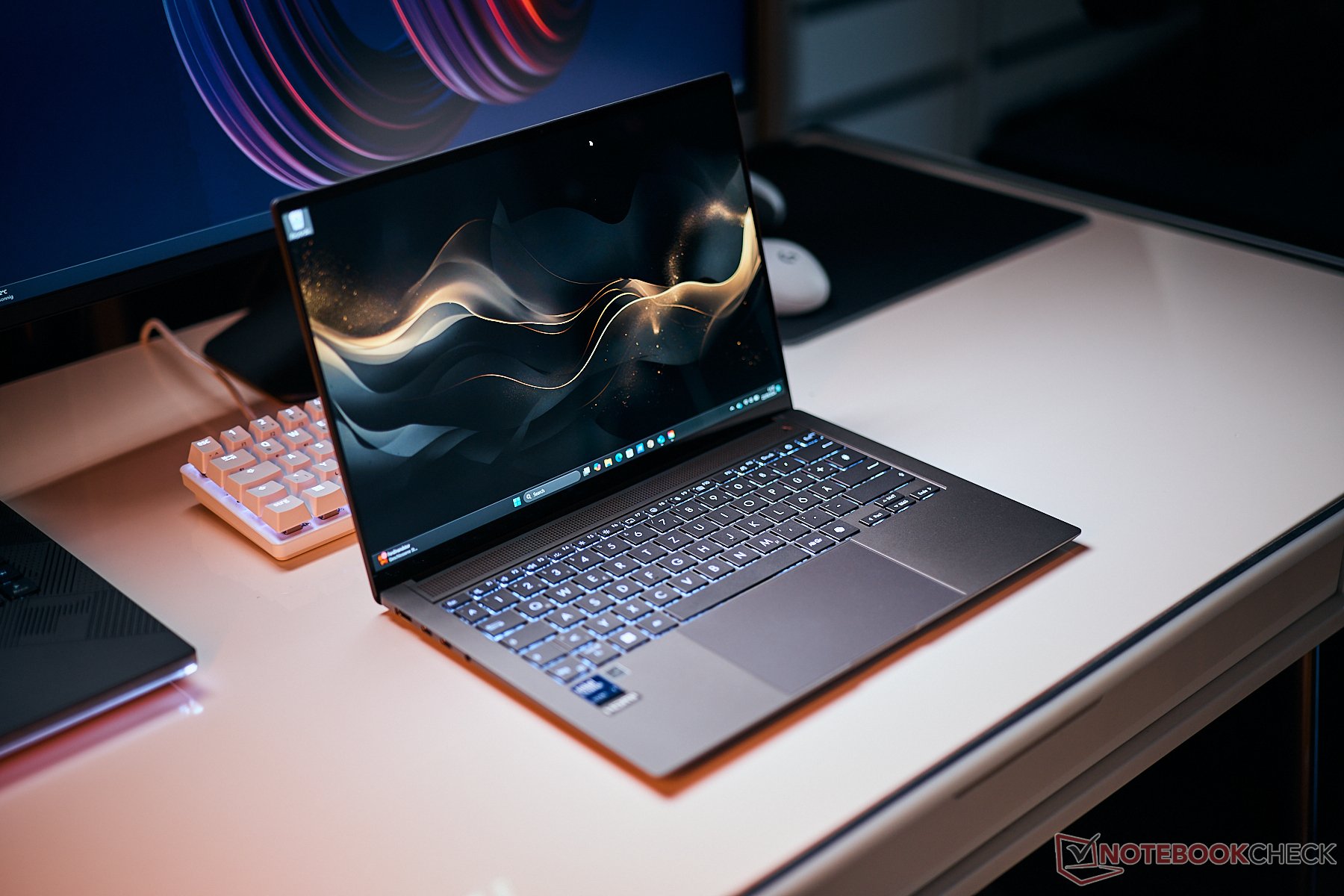
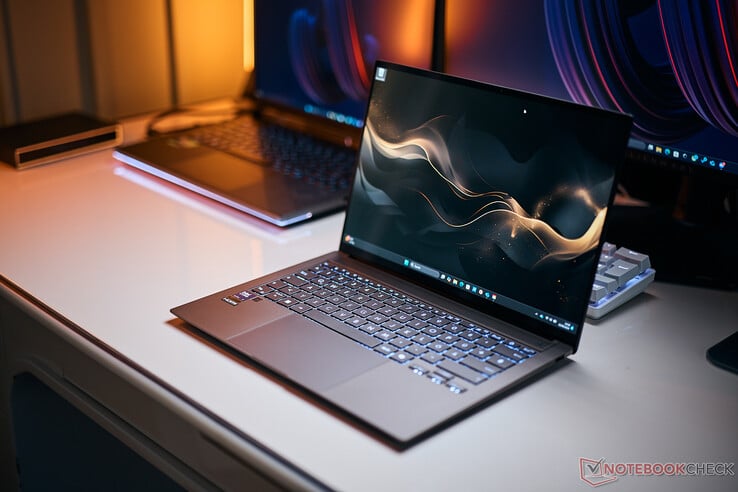







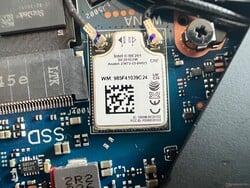

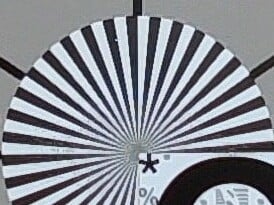

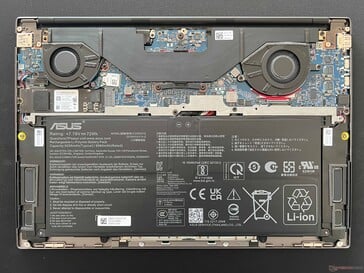



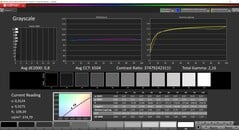


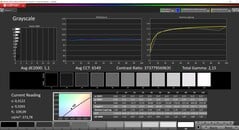



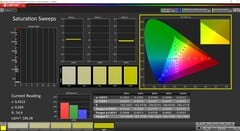

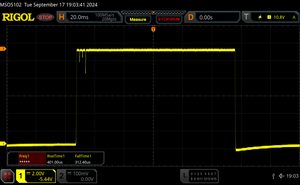
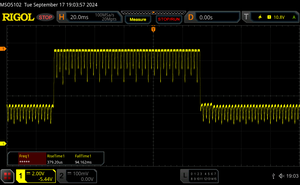
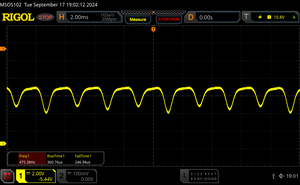











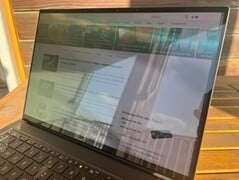

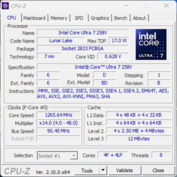

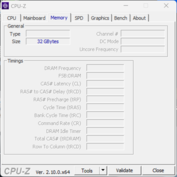
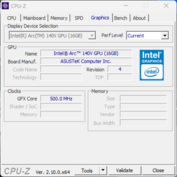
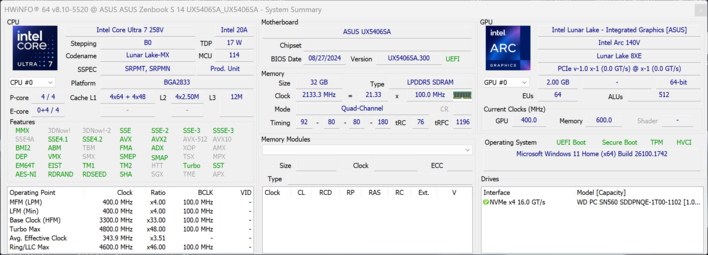
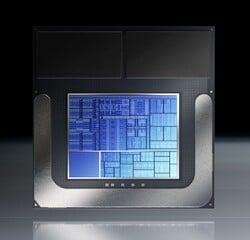


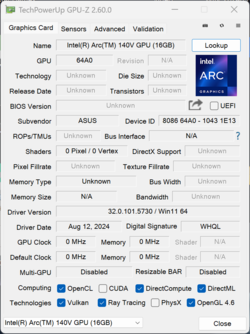
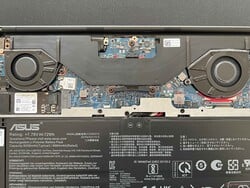
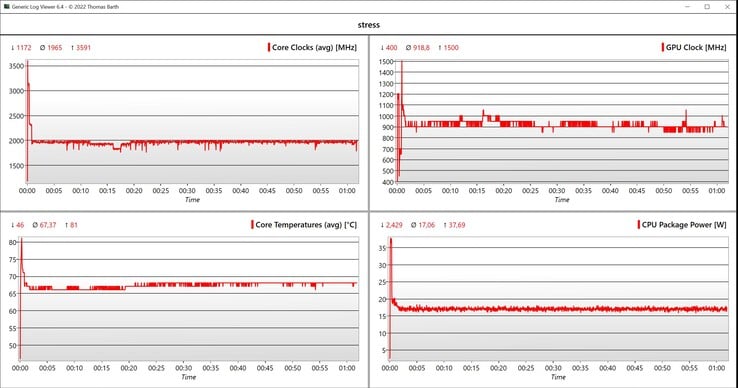
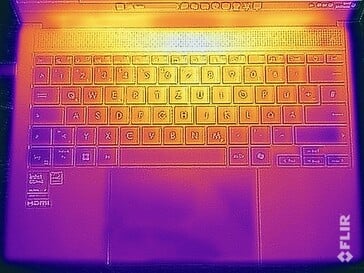
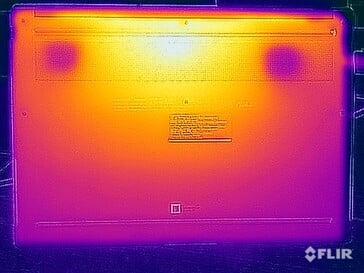
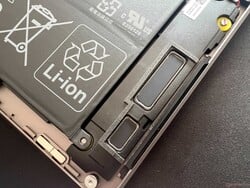
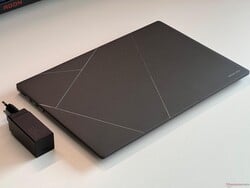
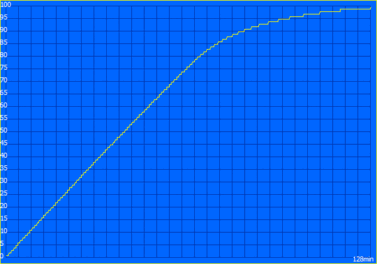

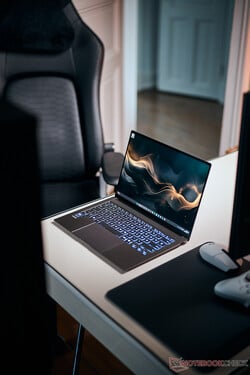
 Total Sustainability Score:
Total Sustainability Score: 








